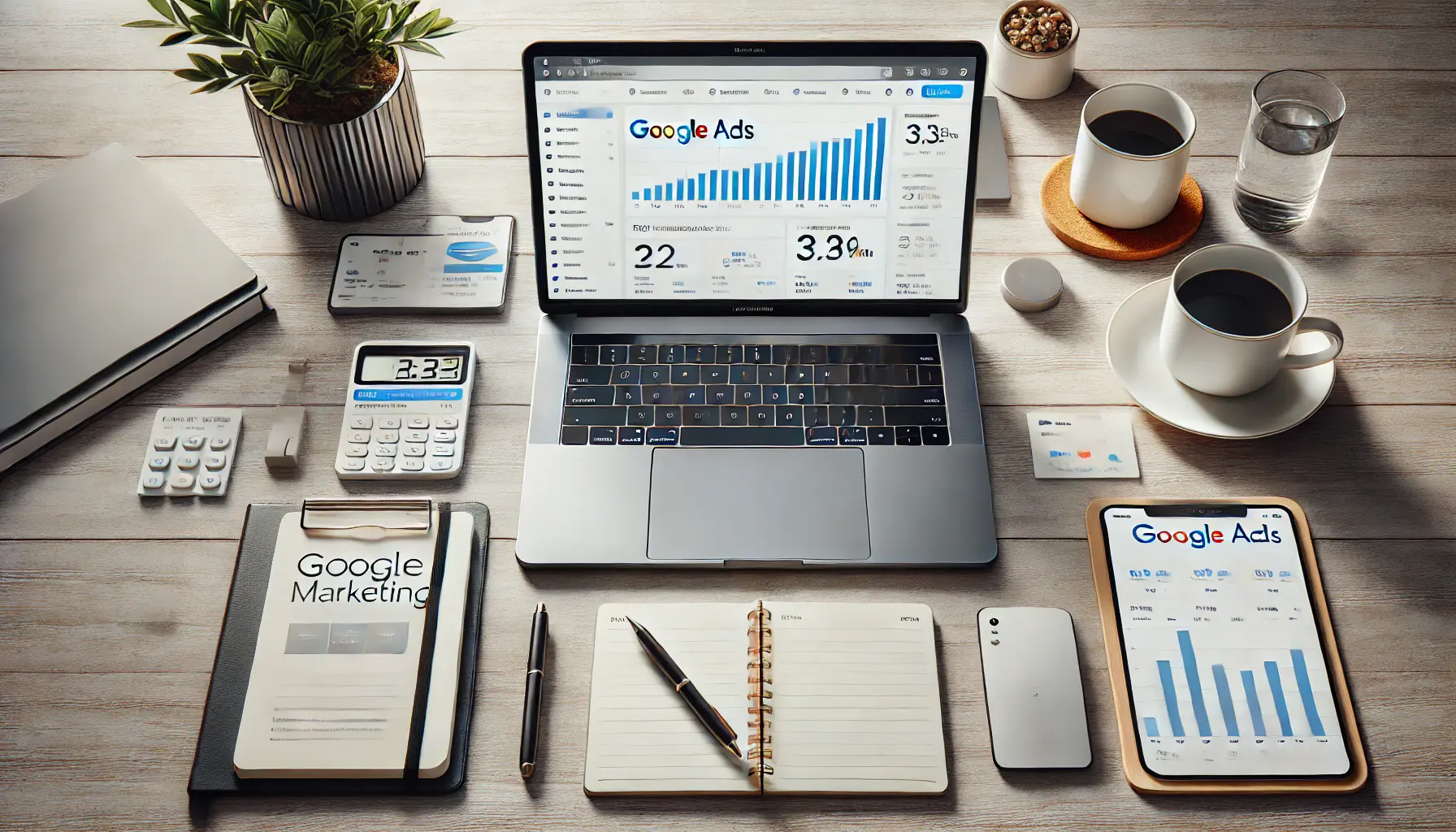Targeting your audience has become an uphill task in today’s competitive digital space.
Audience targeting is the secret to making sure that Google Ads campaigns are precisely on target, driving engagement, and ensuring maximum return on investment.
With recent developments taking place within Google Ads, advertisers can fine-tune audience targeting strategies in newer ways.
This article will walk you through the most critical of these changes, how they may impact your campaigns, and how to use them to your advantage.
Targeting, based on a selection of set audience criteria, is a vital Google Ads feature.
Targeting adjustments to audiences allow you to refine who sees your ad so that your message reaches people most likely to be interested in your products or services.
By learning how to adjust and optimize your audience targeting, you will be able to dramatically improve ad performance, reduce wasted ad spend, and get better results.
- Understanding the Basics of Audience Targeting in Google Ads
- Advanced Audience Targeting Strategies
- Adapting Audience Targeting to Evolving Consumer Behavior
- Best Ways and Tips for Effective Audience Targeting
- Audience Targeting: How to Master Success in Google Ads
- Google Ads Audience Targeting: Frequently Asked Questions
Understanding the Basics of Audience Targeting in Google Ads
Before we dive into audience targeting modifications, let’s talk about some of the core basics of audience targeting in Google Ads.
At its core, audience targeting is targeting people who are more likely to engage with your ads.
This is accomplished by filtering your target audience through demographics, interests, behaviors, and prior interactions with your business.
Because of this, Google Ads offers a range of audience targeting options, each useful in their own right.
Some of these include the following:
- Demographic targeting: Target by age, gender, income, and more.
- Interest targeting: Reach users based on their hobbies and interests.
- In-market audiences: Reach people actively searching for a product or service like yours.
- Remarketing: Target users who have already interacted with your site or app in the past.
- Custom Audiences: Build an audience that perfectly fits your needs using your data, such as website visitors or email subscribers.
Each of these audience targeting methods allows you to get closer to reaching that perfect customer, making your ad relevance better and increasing conversions.
But how do you adjust these settings for the best outcome?
That’s where audience targeting modifications come in, and we’ll get into that with specificity in the next sections.
Targeting of audiences can significantly change how campaigns perform in Google Ads.
The proper audience targeting alterations make quite a difference in ensuring success.
These changes are driven by ever-growing competition and evolving consumer habits.
Fine-tuning your audience targeting helps ensure that your ads reach only the most relevant users, maximizing your ad spend and improving overall performance more effectively.
Understanding the potential impact of these changes is crucial to optimizing your campaigns.
Let’s dive into how changes in audience targeting can impact your advertising strategy.

An abstract visual illustrating the refinement process of narrowing down target audiences in digital marketing.
The Importance of Audience Refinement
Refining the audience allows you to fine-tune your audience targeting to ensure your ads are showing to the right users.
This could mean narrowing down your audience by demographics, interests, or behaviors.
For instance, if you’re running a campaign for high-end products, you can target users in specific income brackets to guarantee better returns on investment.
This refinement helps eliminate unnecessary traffic and focuses on potential customers who are more likely to convert.
Audience refinement also involves excluding certain groups that will not result in conversions.
These negative audiences can save you money by reducing wasted ad impressions, leading to a more efficient ad campaign.

An abstract image illustrating various audience targeting modifications and their benefits in Google Ads.
Common Modifications and Their Benefits
Some of the most common audience targeting modifications include adjusting demographicStatistical data relating to the population and particular groups within it, such as age, gender, or income. settings, adding affinity audiencesGroups of users with long-term interests, lifestyles, or preferences that align with your business., and applying remarketingA strategy that allows you to reach people who have previously interacted with your site or app. lists.
Below are a few modifications and how they benefit your campaigns:
- Demographic targeting adjustments: Target specific demographics such as age, gender, or income to ensure your ads reach people who are more likely to be interested in your products or services.
- Affinity audiences: These audiences consist of users with long-term interests or lifestyles. By targeting affinity audiences, you’ll focus your ads on people who have a strong interest in your niche.
- Remarketing lists: Target users who have previously interacted with your website or app, encouraging them to return and complete a conversion. This is an effective way to increase conversions and maintain brand awareness.
- Exclusion lists: By excluding specific audiences, such as those who have already converted or shown disinterest, you can improve your overall campaign efficiency.

An abstract depiction of the negative outcomes and risks associated with incorrect audience targeting in digital marketing.
The Risks of Incorrect Audience Targeting
While refining your audience targeting can enhance campaign performance, improper adjustments can lead to poor results.
Under-targeting may cause your ads to be displayed to users who are unlikely to engage with your business, wasting your ad budget.
It’s essential to regularly check your targeting settings to ensure the adjustments you’re making are producing the desired results.
Monitoring key metrics such as click-through rates (CTR), conversion rates, and cost per conversion will help you identify issues and make necessary changes before they impact your campaign performance.
Audience targeting in Google Ads helps you narrow down users based on demographics, interests, behaviors, and more, leading to higher conversion rates and improved ad performance.

An abstract illustration showing the precision and complexity involved in advanced audience targeting strategies.
Advanced Audience Targeting Strategies
Targeting only general audience categories is never enough because the playing field keeps evolving.
To stay ahead, advanced audience targeting can significantly boost the effectiveness of a campaign.
It enables you to perfect your targeting efforts and reach users who are more likely to take action on your ads or convert.
Here are some advanced methods to fine-tune your audience targeting on Google Ads.

An abstract representation of how first-party data is used to enhance audience targeting and personalization.
Using First-Party Data for Better Targeting
By far, one of the best techniques to improve your audience targeting is using first-party dataData collected directly from your audience or customers, such as purchase history or behavior on your website..
First-party data includes information gathered directly from your customers, such as website behavior, purchase history, and email lists.
Based on this type of information, you can build highly relevant custom audiencesAudiences created using your own data, such as website visitors or email subscribers. tailored to your business’s needs.
This not only boosts relevance but also ensures you are targeting people who have already shown interest in your products or services.
First-party data can be particularly helpful in generating remarketing lists.
This allows you to retarget users who have previously interacted with your site or app.
These audiences are more likely to convert, and with the help of first-party data, you can ensure your messaging is personalized to their preferences.

An abstract illustration showing how affinity and in-market audiences are identified and engaged for precise targeting.
Leveraging Affinity and In-Market Audiences
Another advanced audience targeting strategy is using affinity and in-market audiencesUsers actively researching or comparing products and services similar to yours..
Affinity audiences consist of users with long-term interests or hobbies related to your business.
By targeting these users, you ensure that your ads appear in front of people who are already interested in your niche, increasing the likelihood of engagement.
In-market audiences, on the other hand, target users who are actively looking to purchase products or services similar to yours.
These users are much more likely to make a purchase, and by targeting them, you can significantly improve your conversion rates.
By leveraging these audience segments, you can focus your ad spend on users more likely to make a buying decision.

An abstract image illustrating how custom audiences are built and tailored for specific advertising goals.
Custom Audiences: Tailoring Ads to Specific Needs
Custom audiences allow you to tailor your audience targeting efforts based on data unique to your business.
Google Ads offers several options for creating custom audiences, including:
- Custom affinity audiences: Build audiences around specific interests and keywords related to your niche.
- Custom intent audiences: Target users based on their recent search behavior, focusing on those actively researching products or services like yours.
- Customer match: Upload lists of emails, phone numbers, or mailing addresses to target users across Google’s properties, including YouTube and Gmail.
These custom options allow you to fine-tune your ads and ensure they reach users who are highly relevant to your business, improving the chances of conversion.

An abstract image representing the process of filtering out unqualified audiences for more effective targeting.
Strategies to Exclude Unqualified Audiences
While targeting the right audience is essential, excluding the wrong audience is equally important.
Using exclusion listsLists that specify audiences you do not want your ads to be shown to, such as users who have already converted. helps prevent your ads from being shown to users who are unlikely to convert, such as those who have already purchased your product or users from demographics that don’t align with your business goals.
Excluding unqualified audiences not only helps reduce wasted ad spend but also ensures your ads are more likely to reach potential customers.
Regularly reviewing and updating your exclusion lists as your business grows will help maintain the efficiency of your campaigns.
Leveraging first-party data, custom audiences, and in-market audiences allows advertisers to better personalize their ads and maximize conversions.

An abstract illustration showing the adaptation of audience targeting strategies to shifting consumer behaviors.
Adapting Audience Targeting to Evolving Consumer Behavior
Similarly, as consumer behaviors change, audience targeting in Google Ads must evolve.
The ability to adapt to these shifts in behavior is crucial for maintaining the relevance and effectiveness of your campaigns.
Decision-making has grown more complex among today’s digital consumers, and targeting methods have to evolve to keep up with the new demands.
Understanding and adapting to these changes will further help you refine your approach and produce effective results.
An abstract illustration showing the continuous monitoring and tracking of consumer behavior trends in digital marketing.
Tracking Consumer Behavior Trends
There are various trends that influence consumer behavior, such as technological advancements, economic conditions, and cultural shifts.
For instance, the rise of mobile has changed how people interact with online content, making it imperative for advertisers to adjust their audience targeting accordingly.
By monitoring changes in search trends, social media interactions, and e-commerce behaviors, you can learn how to tailor ads for different audiences.
Google Ads offers several tools, including Audience Insights and Search Trends, which can help you stay abreast of these shifts.
By regularly reviewing this data, you can adjust your audience targeting strategies to better align with current consumer behaviors.

An abstract depiction of how audience insights drive campaign adjustments and optimization in digital marketing.
Using Audience Insights for Campaign Adjustments
Google’s Audience Insights tool provides detailed information about the demographics, interests, and behaviors of users in your targeted audiences.
This tool helps you understand how different groups of people interact with your ads and which audience segments perform best.
By analyzing these insights, you’ll be able to tailor your audience targeting toward the most engaged users to ensure better ad performance.
For example, if you notice a certain demographic engages more with your ads, you might increase your bid for that audience and exclude or reduce the bid for underperforming audiences.
This type of continuous optimization is key to staying competitive and maximizing your ad spend return.
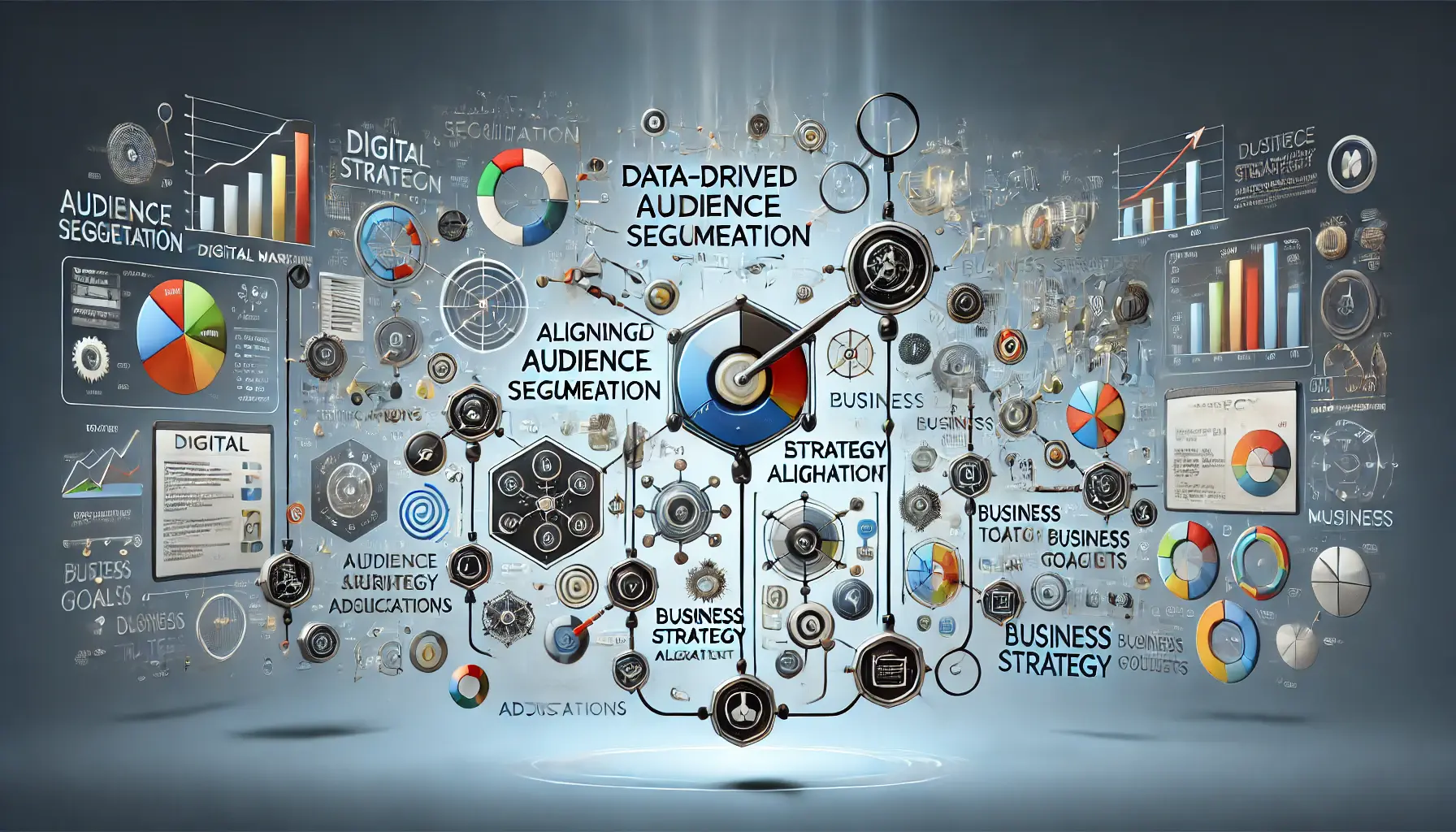
An abstract illustration showing the connection between audience targeting adjustments and aligning them with business goals.
Aligning Audience Modifications with Business Goals
As you modify your audience targeting strategies, it’s important to ensure these changes align with your broader business goals.
Every adjustment you make should drive your overall marketing objectives, whether it’s driving traffic to your website, increasing conversions, or improving brand awareness.
For example, if you’re looking to break into new markets, you might target audiences in new geographic locations or focus on new demographics.
On the other hand, if your goal is to build brand loyalty, using remarketing lists can help reach previous customers with a strong brand message.
By matching your targeting options to the right business needs, you’ll achieve significant outcomes from your ad campaigns.
Staying updated with consumer behavior trends is essential for refining audience targeting strategies and ensuring campaign relevance.

An abstract illustration showing the best ways to optimize audience targeting strategies in digital marketing.
Best Ways and Tips for Effective Audience Targeting
Effective audience targeting is crucial to running successful Google Ads campaigns, but you need to regularly optimize the strategies that you put in place for long-term success.
Following a few best practices will enable you to enhance the performance of your campaign and make the most of your budget to drive higher-quality leads.
Here, we cover some of the best advice to help you refine your audience targeting mechanisms.

An abstract depiction of the ongoing process of testing and refining audience segments in digital marketing campaigns.
Continuous Testing and Refining of Audiences
Perhaps the most critical aspect of audience targeting is continuously testing your targeting settings and refining your audiences.
Digital advertising is highly dynamic, as consumer behaviors and trends change over time.
Here are a few ways to ensure that you are making data-driven decisions:
- A/B test: Experiment with different audience segments to discover which performs better. Perform A/B testing across various audiences to identify which segments yield higher engagement or conversions.
- Monitor campaign performance: Regularly analyze campaign metrics, including click-through rates (CTR), conversion rates, and cost-per-conversion, to identify underperforming audience segments.
- Adjust bids based on performance: Increase bids for top-performing segments and reduce bids for audiences that aren’t delivering strong results.
By constantly testing and refining your target audiences, you’ll ensure that your ads reach the most relevant users and drive the best possible outcomes.
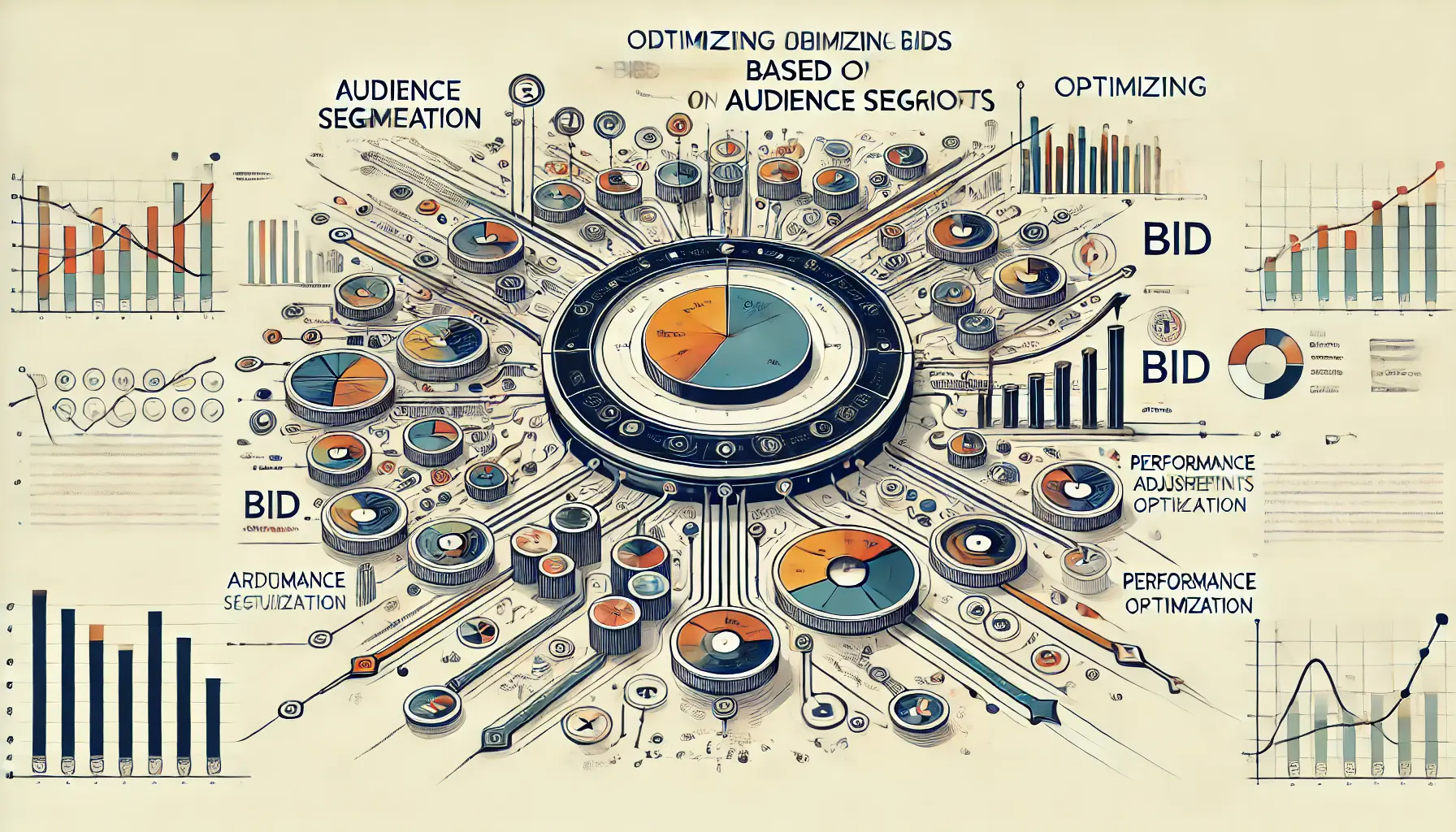
An abstract illustration showing the process of optimizing bids and adjusting strategies based on audience segmentation.
Optimizing Bids Based on Audience Segments
Google Ads allows advertisers to optimize bid performance based on specific audience segments.
If segments of your audience start performing well, increasing your bids for those users may help improve ad visibility and conversion rates.
Conversely, lowering your bids for underperforming segments helps prevent wasteful ad spending.
Here’s how to optimize bids effectively:
- Identify high-performing segments: Use Google Ads reporting tools to understand which audience segments drive the most conversions or engagement.
- Apply bid adjustments: Increase bids for top-performing segments to improve visibility. Reduce bids for underperforming segments to avoid wasting your budget.
- Monitor and refine: Continuously track the impact of your bid adjustments and refine them for even better results.
This strategy ensures your budget is being spent on audience segments that are most likely to convert, improving overall campaign efficiency.

An abstract illustration showing the process of scaling audience targeting by expanding through lookalike audiences.
Scaling with Lookalike Audiences
A lookalike audience is composed of users who closely resemble your current customers or audience segments across several dimensions.
These audiences help reach a greater number of potential customers who are a great fit for your business.
You can build lookalike audiences using data points such as demographic information, behaviors, and purchase history.
Here’s why using lookalike audiences is beneficial:
- Expand your customer base: Lookalike audiences expose you to new users who share similar attributes with your existing customers and are more likely to convert.
- Increase ad relevance: By targeting users with similar traits to your high-performing segments, your ads become more relevant, leading to better engagement and conversions.
- Maximize your ad spend: Targeting users who resemble your best customers increases the likelihood of generating more valuable leads and achieving a better return on ad spend (ROAS).
Lookalike audiences help you scale your campaign efficiently by expanding your reach to users similar to those who have already interacted with your brand.

An abstract illustration showing the errors and inefficiencies that can occur during audience modifications in digital marketing.
Common Mistakes to Avoid in Audience Modifications
While optimizing audience targeting is crucial, here are some common mistakes advertisers should avoid.
Making these mistakes can lead to wasted ad spend, poorly performing campaigns, and missed opportunities for growth:
- Over-segmenting your audience: Targeting too narrow an audience restricts your ad’s reach, reducing the number of impressions and conversions.
- Failing to use exclusions: Not excluding irrelevant audiences wastes ad spend. Always revisit and refresh your exclusion lists to avoid targeting users unlikely to convert.
- Ignoring negative signals: If certain audience segments consistently underperform, remove or reduce them from your targeting. Failing to do so can drain your budget with little return.
Avoiding these common mistakes will help maintain the efficiency and effectiveness of your Google Ads campaigns, ensuring your audience targeting is aligned with your business goals.
Regular testing and optimization of audience segments, exclusion lists, and bid adjustments are key to effective audience targeting in Google Ads.

An abstract illustration showing the process of mastering audience targeting strategies for success in Google Ads.
Audience Targeting: How to Master Success in Google Ads
The backbone of every successful Google Ads campaign is effective audience targeting.
In this article, we covered various strategies, best practices, and common mistakes to ensure that your ads reach the right audience and yield the best possible results.
As competition increases and consumer behavior evolves, it becomes even more important to refine and optimize your audience targeting efforts.

An abstract illustration highlighting the key insights and strategies for optimizing audience targeting.
Key Takeaways for Optimizing Audience Targeting
Advanced audience targeting strategies will better underpin the positive performance of your campaign.
By drawing upon data-driven insights and continually refining your methodology, you ensure that your ads resonate with your target audience while maximizing ROI.
- Continuous Testing: Testing different audience segments through A/B testing and periodically reviewing key performance metrics helps you stay aligned with changing consumer behaviors.
- Bid Optimization: Optimizing bids based on the performance of certain audience groups ensures your budget is spent on users most likely to convert, enhancing overall campaign efficiency.
- Lookalike Audiences: Expanding your reach to users who resemble your best customers enables you to scale your campaigns effectively and generate more valuable leads.
- Exclusion of Unqualified Audiences: Regularly updating exclusion lists prevents wasted ad spend on users unlikely to engage with your ads, allowing your budget to be used more efficiently.

An abstract illustration showing how marketers adapt to evolving consumer behaviors in real-time.
How to Keep Up with Changing Consumer Behavior
Consumer behavior is constantly evolving, and adapting your audience targeting strategies is essential to staying competitive.
Tools like Google’s Audience Insights provide the data needed to refine your targeting, ensuring your ads reach the most relevant users.
Regularly optimizing based on audience trends will help ensure your campaigns remain effective as digital habits change.
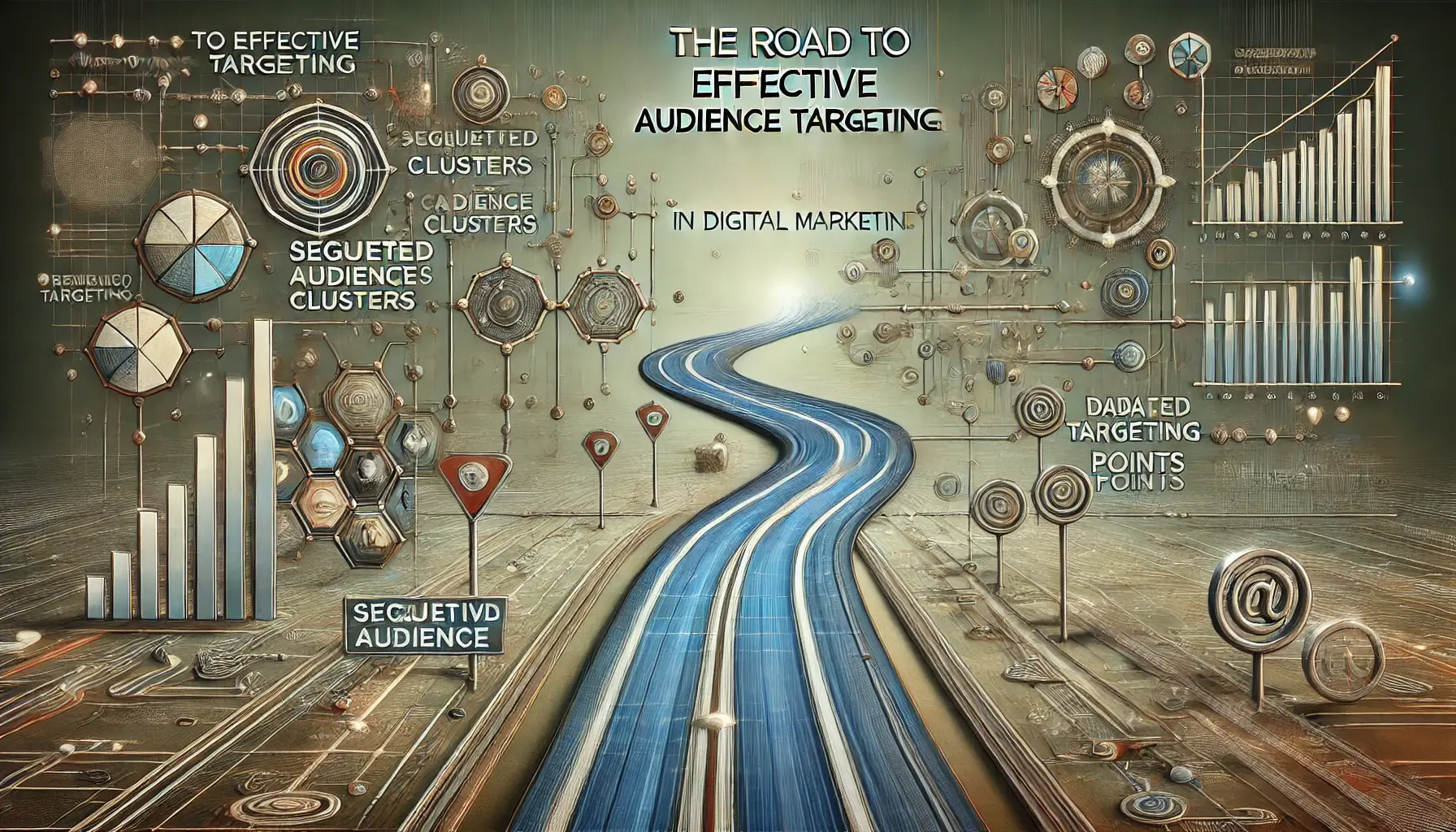
An abstract illustration depicting the pathway and strategy towards achieving effective audience targeting in digital marketing.
The Road to Effective Audience Targeting
Audience targeting is an art honed over time.
Advanced targeting techniques, frequent testing, and refining of audiences, along with data-driven insights, will equip you for success in running Google Ads campaigns that drive meaningful results.
Audience targeting is not a set-it-and-forget strategy; it requires ongoing attention to ensure long-term success.
By following the practices outlined in this article, you’ll improve your audience targeting efforts and create a more profitable advertising strategy.
Whether it’s adjusting bids, fine-tuning audience segments, or excluding underperforming users, a well-executed targeting strategy unlocks your campaign’s full potential and helps your business achieve its goals.
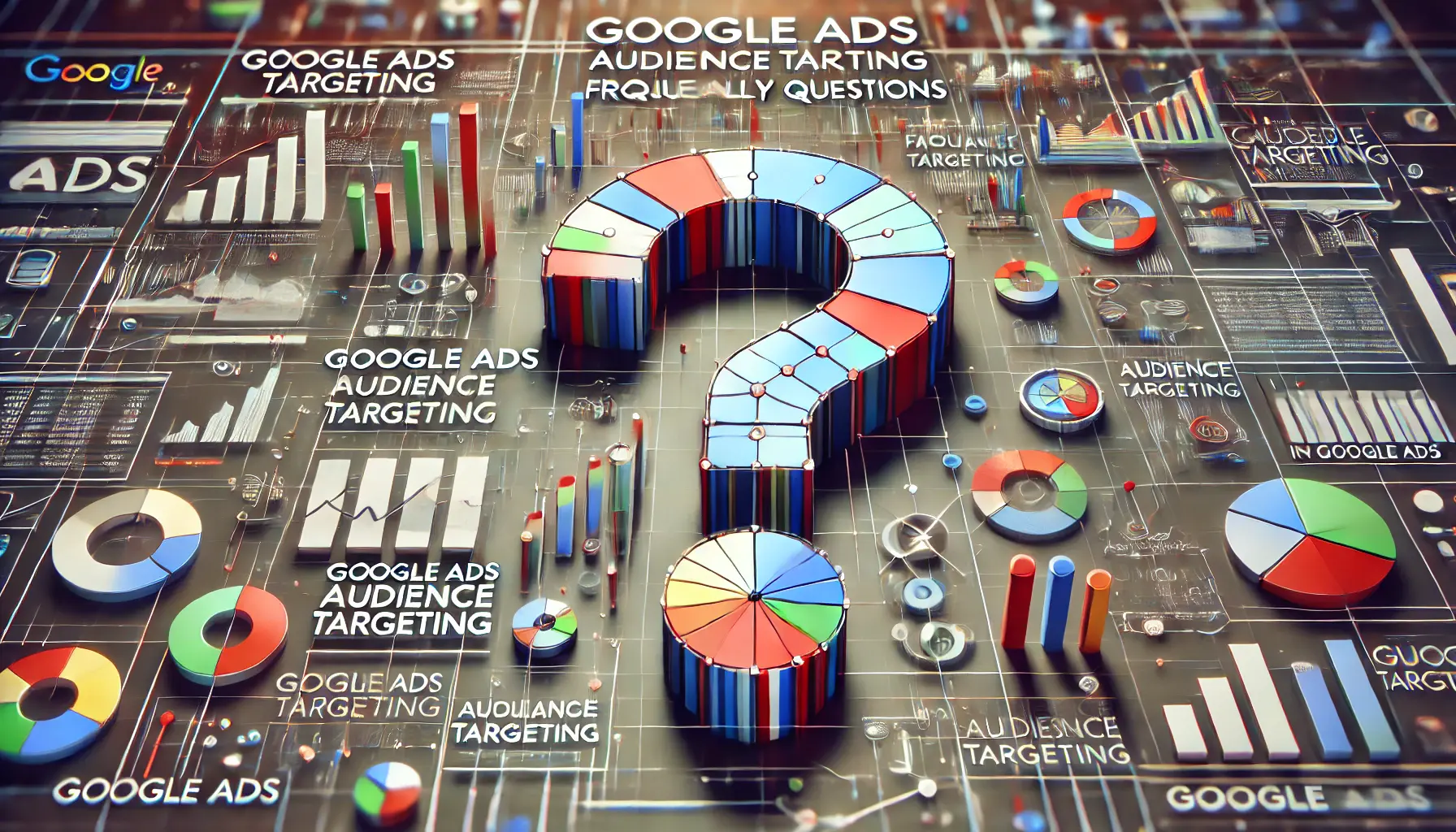
An abstract illustration depicting the process of answering frequently asked questions regarding audience targeting in Google Ads.
Your campaigns can be managed by an agency specialized in Google Ads, check out our service page.
Google Ads Audience Targeting: Frequently Asked Questions
Below are answers to some of the most common questions regarding audience targeting in Google Ads.
These provide a quick insight into how you can improve your targeting strategy for better campaign performance.
This strategy ensures ads are shown to people most likely to engage with the business.
To improve your audience targeting, use data-driven insights, perform A/B testing, regularly optimize bids, and refine your audience segments based on performance metrics to ensure your ads reach the right users.
Lookalike audiences are users who share similar characteristics with your existing customers or high-performing audience segments.
This helps expand your reach to new potential customers likely to engage with your ads.
Regularly updating exclusion lists is important to prevent wasted ad spend.
Review and adjust your exclusion lists at least once a month to ensure you’re not targeting users who are unlikely to convert.
Bid optimization allows you to adjust bids based on audience performance, increasing ad visibility for top-performing segments while minimizing spend on underperforming ones.
This improves overall campaign efficiency and return on investment (ROI).





